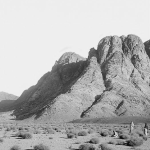
(Wikimedia Commons photo by Scott Catron)
http://nypost.com/2016/11/03/are-mormons-the-happiest-people-in-america/
The answer isn’t quite an unambiguous Yes.
But the article is quite positive.
I would like to know more about the statistics regarding anti-depressant use. They’re cited quite often, very commonly for polemical purposes, but I have questions. Perhaps my questions have already been dealt with somewhere, but maybe not.
Are the anti-depressants in use prescription medicines or over-the-counter remedies?
If they’re over-the-counter, would Utah’s consumption of them be higher than the national average because, in other states, people more commonly self-medicate by means of alcohol? Or even by means of marijuana and other (recreational) drugs? In other words, is the consumption of labeled anti-depressants really a good (albeit admittedly indirect) way of tracking the incidence of depression as such?
If they’re prescription drugs, could a high rate of consumption simply reflect the training style of the state’s single (and quite dominant) medical school (and the consequent prescription habits of its graduates)? As more than a few studies have shown, there are fashions (including fashionable procedures) that differ from one medical school to another. Could such a fashion factor into this matter? I simply don’t know.
Could it even be a matter of Utahns self-reporting more? Or some artifact of data-gathering techniques that might be more robust here, on this topic at least, than elsewhere?
Interesting topic.











